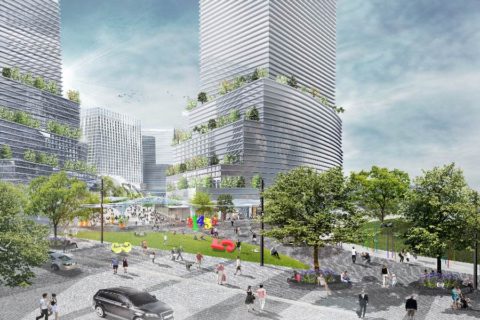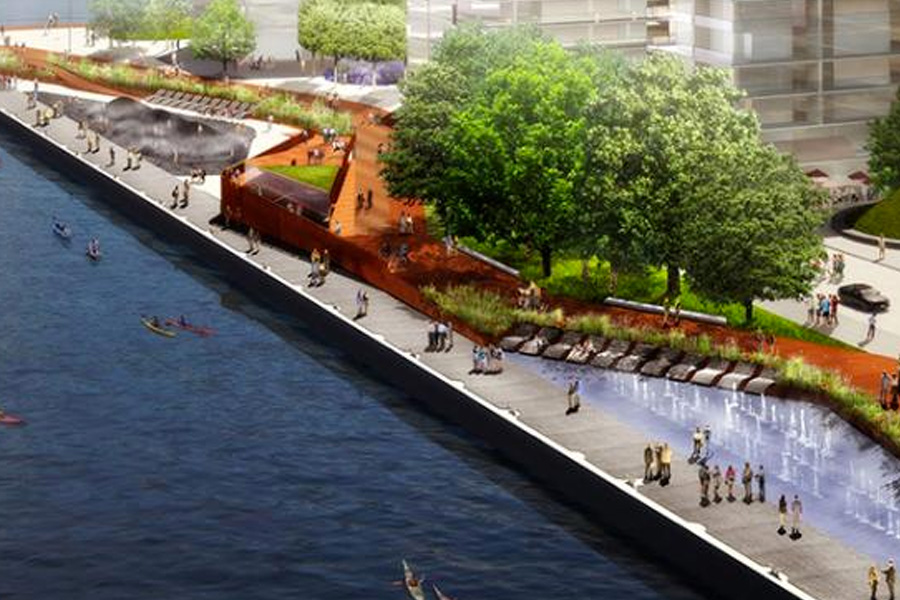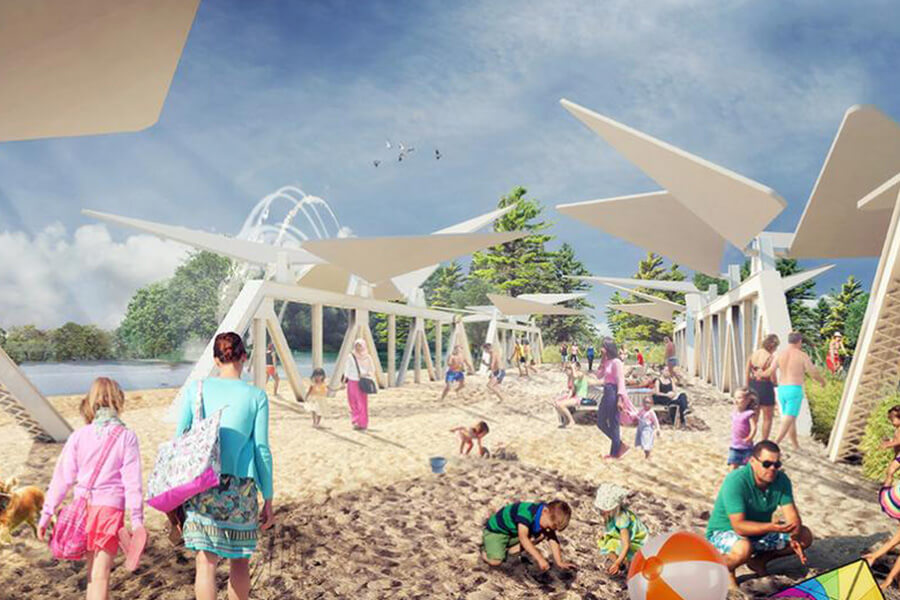
Jack Layton Ferry Terminal
Design Competition
Client
Waterfront Toronto
Location
Toronto, Ontario
2015
Shortlisted Finalist
Design Team
Janet Rosenberg & Studio (Landscape Architect)
Will Alsop /aLL Design (Architect)
Quadrangle Architects Limited (Architect)
Photography Credit: Renderings by JRS, Adrian Phiffer and aLL Design
We propose that anticipation of the ferry ride begins at Bay Street with movement across a landform of refracting wavefronts, simulating the rise and fall experienced in the water at the shoreline.
We were inspired by the visual patterns from the Op-art movement, sharing a philosophy with Bridget Riley that “Nature is not a landscape, but rather the dynamism of visual forces – an event rather than an appearance”. The wavefront pattern further introduces an iconographic motif that integrates in material and color with the vision set in Toronto’s Downtown Waterfront Strategic Plan to overcome the existing visual incongruity, and create a sense of inter-connectedness and identity. It appears to roll across the topography, just as the fog horn of the ferry boat announces to all travelers the signature pattern of sound waves in the call to board.
More discrete separations in grade, and the differentiation of materials, distinguish locations of high traffic from those of rest and repose. The materials come to represent a shaping of the energies that define the integrated outcome: the park as a ferry terminal, the terminal as a park. It becomes an active park with the singular mission of making the voyage a positive experience, one that for the twenty-first century actually works!
Ecology brings a new paradigm to landscape architecture as inspiration for the aesthetic challenge, while also allowing for the insertion of resilience in the face of coastal and climatic challenges.
We have selected tree species with distinct characteristics, to increase the diversity and give visual identity to the concept of a coastal transition of zones. Water activities of different kinds are introduced to the cove at Harbour Square West where swimming in the lake should be part of the experience of the waterfront experience. The now more sheltered cove becomes available for model boating as well as small watercraft such as kayak and canoe, and promises great potential for aquatic fish restoration.










